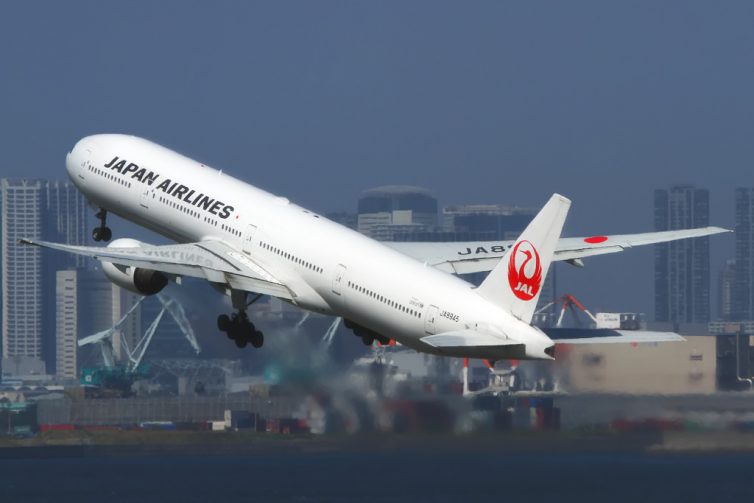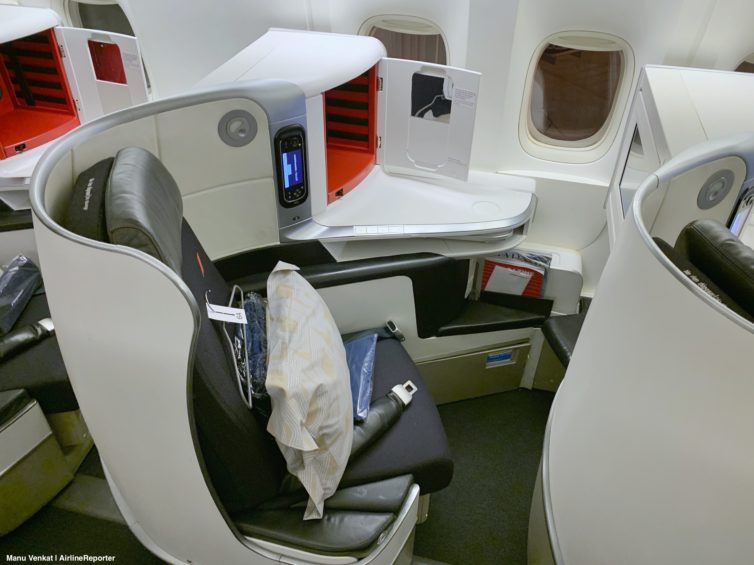
What’s a French spin on long-haul flying look like? Until a few months ago I had no idea. I’d never flown Air France, their recently-retired millennial spinoff airline Joon, or a French leisure carrier like French Bee or Corsair. For my first flight on a French carrier I opted for the classic, and scored a nice deal with miles on Air France in business class from Sao Paulo to Paris. It would be on a Boeing 777-200ER, a plane well equipped to handle a long-haul flight like mine. The triple-seven isn’t the largest plane in Air France’s fleet (the A380 is) and newer dual-engine long-haul planes like the 787 and A350 get more love and attention nowadays. But Air France has a long proud history with the 777 — they were the launch customer for the 777-300ER — and the 777 is the backbone of the airline’s long-haul fleet.
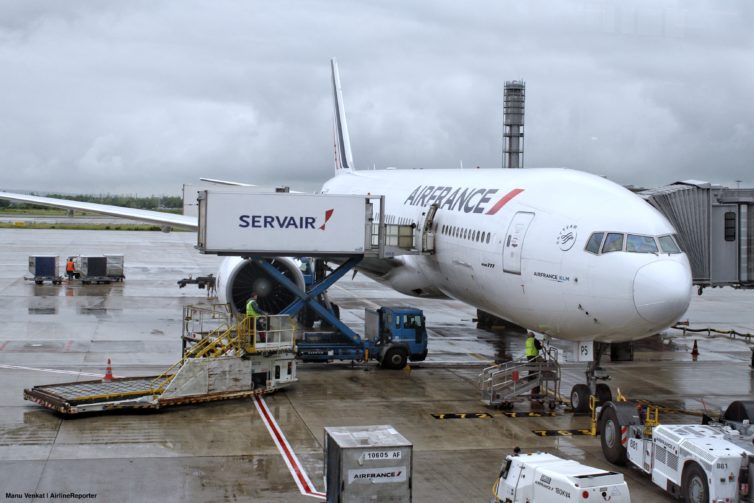
In terms of the onboard experience, Air France embraces the stereotype of French style and service. So as I geared up for my flight, I was looking to see if cabin design, dining, and service would do the airline’s home country justice. Did they? Read on to find out!
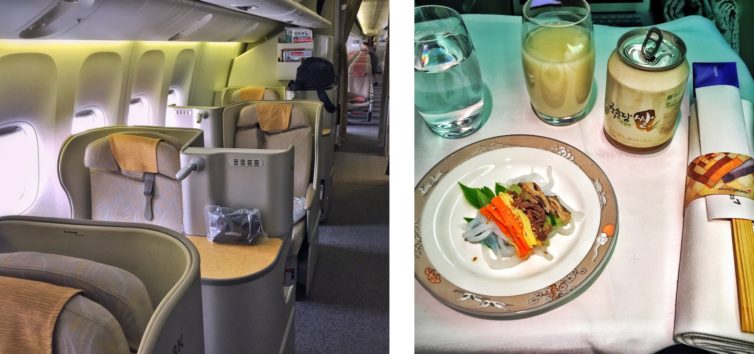
When it comes to business class, branding is big. British has “Club World,” Delta has “Delta One,” United has “Polaris,” EVA has “Royal Laurel” — the list goes on and on.
The Korean airline Asiana is popular and I’ve wanted to try it for a while, but I think the name they picked for their premium cabin — Business “Smartium” Class — is a bit goofy. But hey, maybe they picked the name for a reason. Maybe it was designed by geniuses. Maybe it’s such an amazing product that it’s the only smart way to fly.
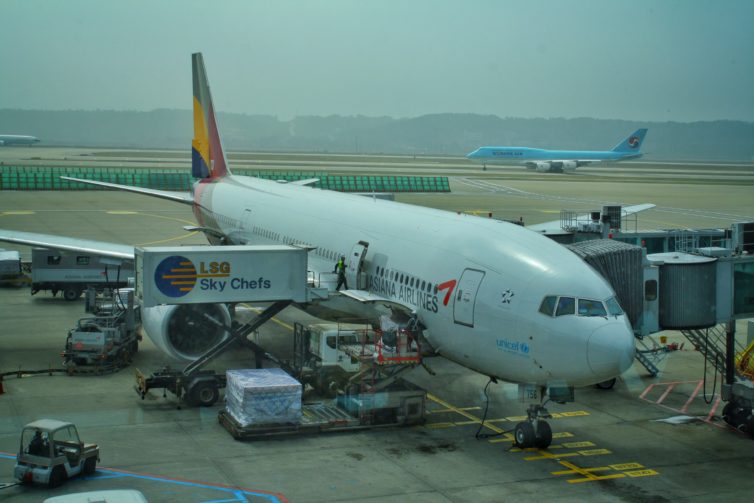
Asiana Boeing 777-200ER – Photo: Manu Venkat | AirlineReporter
Well, there’s only one way to find out! Read on as we share our experience on a long-haul Smartium flight from Seoul/Incheon to London on a 777-200ER. We’ll rate each part of the experience, and at the end you can decide for yourself whether the product is as smart as the name suggests.
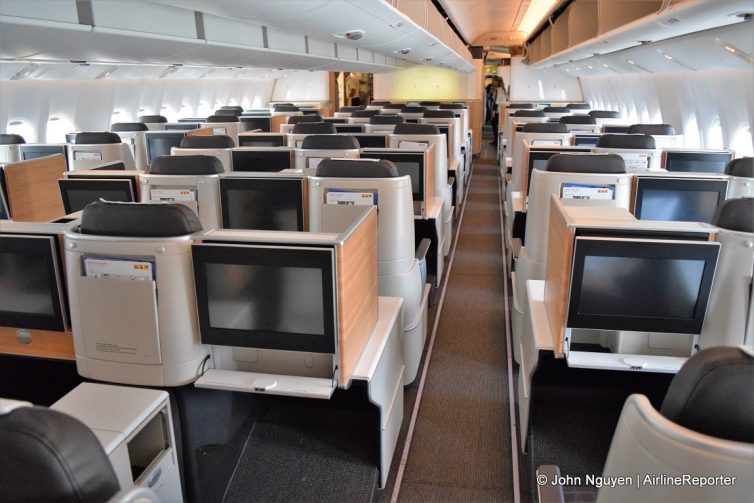
Main business cabin on the Swiss 777-300ER
On June 10, Swiss International Air Lines officially inaugurated its new Boeing 777-300ER (77W) on its first regularly scheduled daily service to the United States. The debut flight took off from Zà¼rich/Kloten Airport (ZRH) and arrived at Los Angeles International Airport (LAX). The 77W is the first Boeing product in Swiss’s mainly-Airbus fleet, and carries 55% more passengers than the Airbus A340-300 (343) it replaces on the ZRH-LAX route. Its first 77W, HB-JNA (delivered on January 29) with its special “Faces of SWISS” livery, made the flight.

A Swiss 777-300ER (HB-JNA) in special “Faces of SWISS” livery – Photo: Swiss
Swiss gave the public a CGI-based video preview of the all-new aircraft and completely redesigned interior, and AirlineReporter was the first to confirm the delivery date of HB-JNA. We were also one of the few media to be invited to LAX for the inaugural events to take a look with our own eyes. Were we disappointed?
Japan Airlines (JAL) announced last week that its newly-revamped Boeing 777-200ERs (772s) dubbed “JAL SKY SUITE 777” or “SS2” will debut on June 18 from Tokyo Haneda (HND) to Bangkok (BKK). Designated for regional flying, the SS2 will feature now-industry standard lie-flat seating in business class, a roomy premium economy section, and best-in-class nine-abreast seating in economy, going against the grain during a time when virtually every new refurbishment of 777s calls for ten-abreast seating.
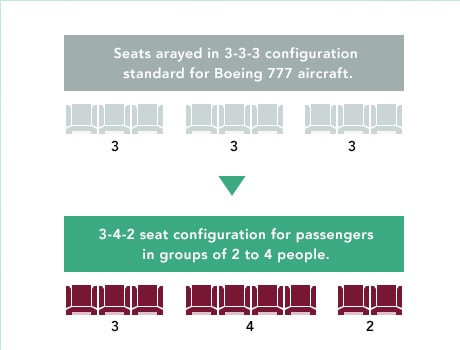
An illustration of the new economy seating configuration on JAL’s “SS2” Boeing 777-200ER – Image: Japan Airlines
What’s even more eye catching is JAL’s choice to go with an asymmetric 3-4-2 arrangement, while every other carrier uses 3-3-3 (well, when they do have nine across on their older planes). Where new premium seating is all the rage nowadays, JAL manages to remember the little people, and the economy cabin steals the spotlight…
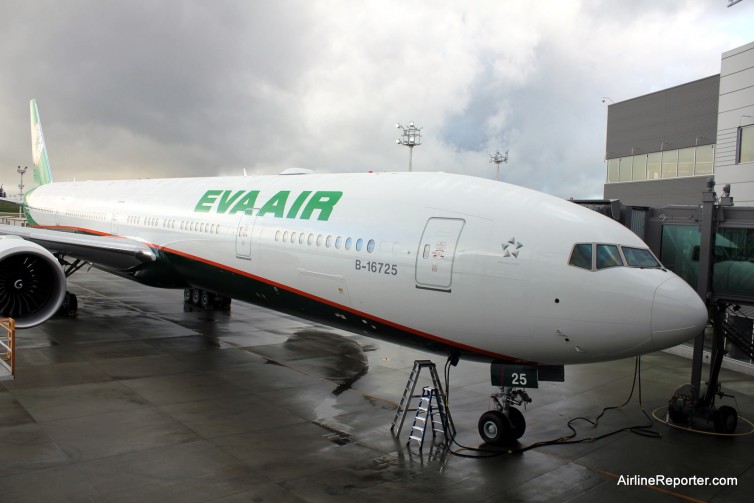
A brand-new EVA Boeing 777-300ER, currently the most popular 777 variant, at Paine Field (with nine-abreast economy)
In October 2015, it appeared that Cathay Pacific was ’˜flirting’ with the idea of changing its long-haul 777 economy class from a 9-abreast to a 10-abreast cabin. This appears to be correct, since Cathay Pacific gauged the responses of some of its most loyal Marco Polo customers in a recent survey to see whether they would accept a 3-4-3 configuration on their long-haul 777 aircraft.
BONUS: Flying a Cathay 777 Across North America in Business Class
’œTo understand the needs of our customers as well as the trend and development of the airline industry, Cathay Pacific periodically conducts research on different aspects of our offerings so as to continuously improve on our passenger services,’ Julie Jarratt, Cathay Pacific Communications Manager explained to AirlineReporter. ’œCathay Pacific, at this stage, has no decision to change the seat width and seat pitch of our 777 fleet.’
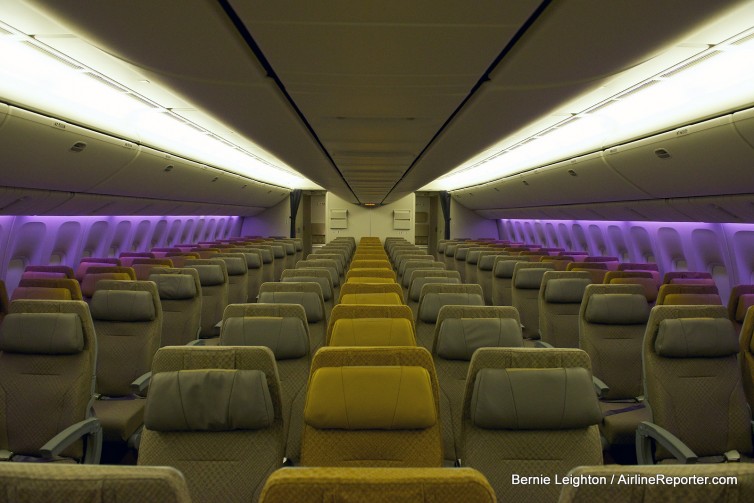
The economy cabin inside a Singapore Airlines 777
From an airline’s perspective, the rationale for a 10-abreast cabin is quite obvious. Not only does it provide a higher profit margin, by lowering its cost per seat mile, but it (theoretically) allows these savings to be put into other benefits for travelers in the form of cheaper airfares or enhanced services. In this sense, a denser cabin allows airlines to move greater numbers of passenger on fewer flights, which leads to fuel efficiency in the form of equated fuel burn reduction savings. I wanted to take a closer look at which airlines are taking delivery of the higher-density 777s, as that configuration is becoming more and more popular.






